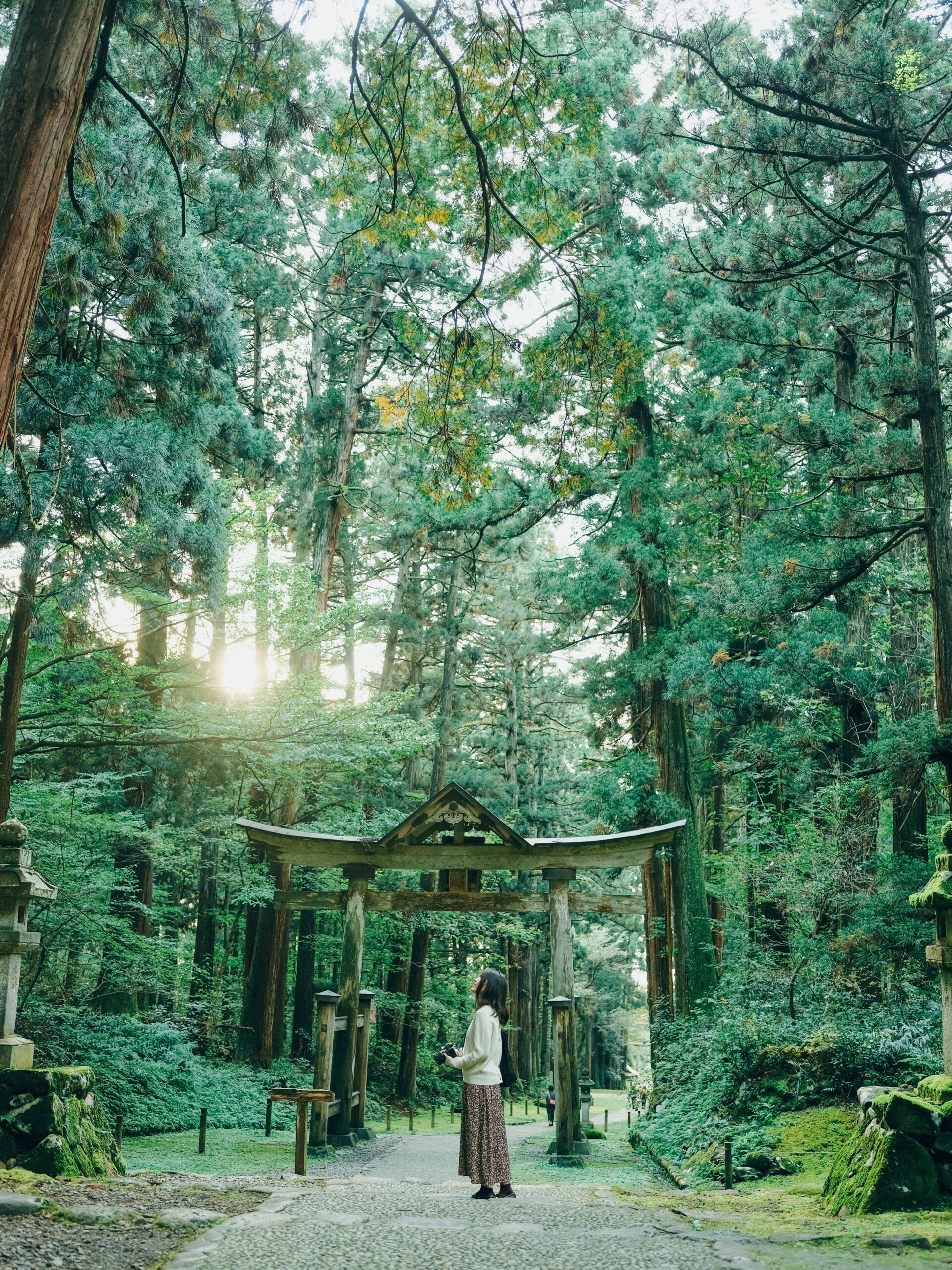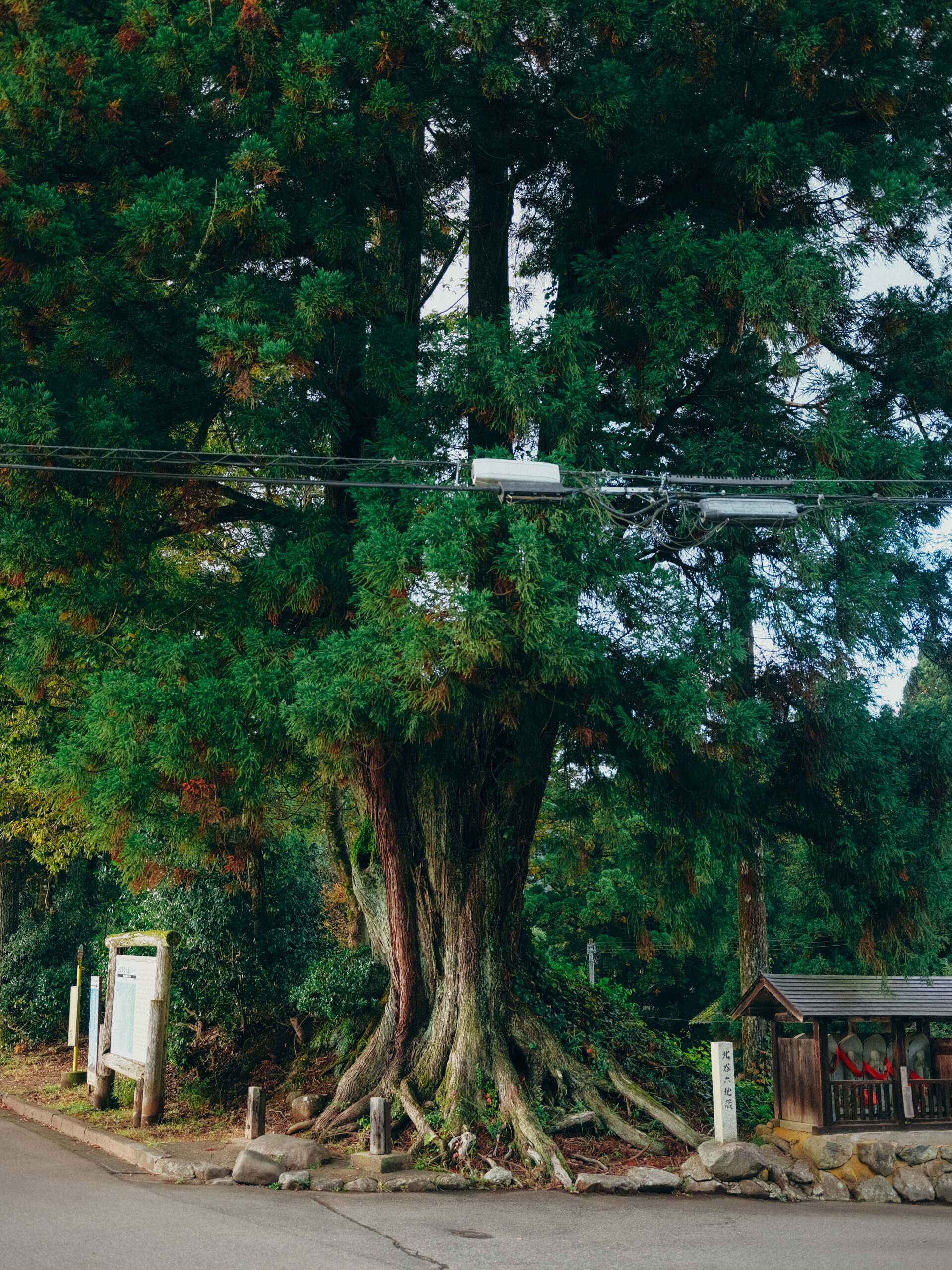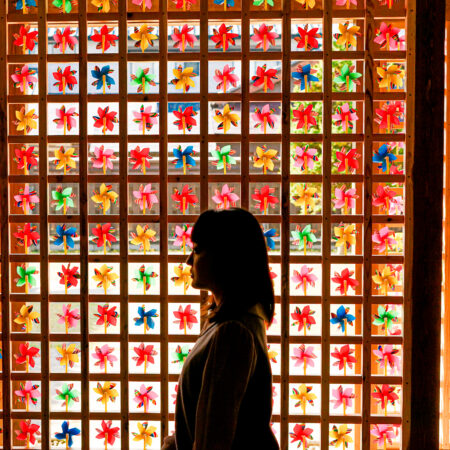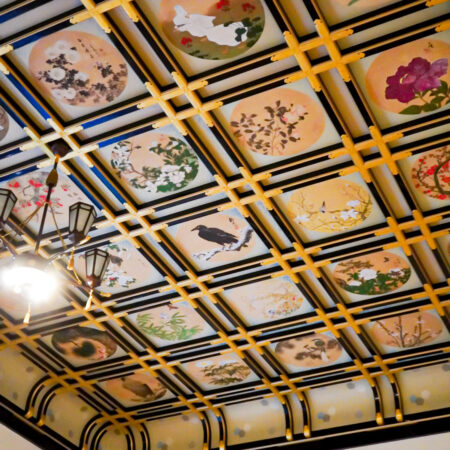A secluded and mysterious shrine that will soothe and calm your spirit
HISTORY: Wrapped in mystery—sacred ground for the mountain faith.
Many aspects of Heisenji Hakusan Shrine are hidden in mystery - warrior monks and religious wars, legends of divine visitation, mountain worship, hybrid religions and more! But all of that seems to slip away from your mind as you enter this peaceful and soothing forested shrine!
A wide, stone path extends up a slightly steep incline to a large torii gate, behind which only trees are visible from the base of the stairs. Light moss covers both sides of the cobblestone steps in the center. What at first appears to be no more than a set of ancient stones forming stairs becomes a magically different world as you draw closer to the stone gate.
Beyond the gate, the stairs seem to broaden, the colors and hues become fuller, and the moss is thicker, fuller and covers everything. Though it was already quiet, it feels quieter still with the massive cedar trees lining both sides. The air sits cooly, yet soothing as you breathe it in deeply.
The 500 year old cobblestone path now stretches out much further, disappearing straight into the forest. The more you climb, the more you appreciate the great effort made by the monks who labored to carry these stones more than 3 kilometers from the Kuzuryu River and place them here to make coming to worship possible.
Shortly after passing through the large, stone torii gate, you will find a smaller path to the left that leads to Mitarashinoike Pond. The pond is filled with sparkling spring water, the surface reflecting the forest like a mirror. It is said that when Taichō was praying toward the rock in the middle of this pond, a goddess appeared. After this revelation, Taichō established Heisenji here. The story of this encounter lends to the mysterious atmosphere of the shrine.
Further up, and just past a gated path that leads to the residence of the monk who currently tends the shrine, the forest opens up enough to allow a bit more sunlight to filter through the branches of the towering trees, some of which are hundreds of years old.
A blanket of soft moss covers the entire ground, except for the narrow footpaths going from structure to structure. An occasional moss covered stump tells the story of an even older time, and that even though that tree is now gone, the moss has taken over, giving new life to the stump, immortalizing the once magnificent tree. Even the stone lanterns wear thick skirts and hats of moss.
The entire area is both breathtaking and refreshing at the same time. It’s no wonder that the shrine gardens were designated a National Place of Scenic Beauty!
Just above this open area, you will find the hall of worship which was rebuilt in the late Edo period, its modest exterior beautiful. Nearby is the main hall, which was built in 1795, and enshrines the spirits of the three Hakusan mountains.
After it was burned to the ground, Heisenji was partially rebuilt, but the present-day Heisenji Hakusan Shrine is a mere one-tenth of its former size. Many artifacts remain within the grounds, and archeological efforts were started in 1989. The sheer quantity and physical state of the artifacts that were discovered were considered to be of national importance, resulting in nearly 200 hectares to be designated as a National Historic Site.
After visiting the two inner shrines, visitors can return along the approach, or head out on a secondary path to the south which takes you by some of the archeological dig sites. As you make your way back to the parking area, you can pass through a small village adjacent to the shrine. Here, you will find a lovely traditional house that has been converted into a cafe. There you can rest your legs as you enjoy tea and local snacks prepared by the residents of this small hamlet.







